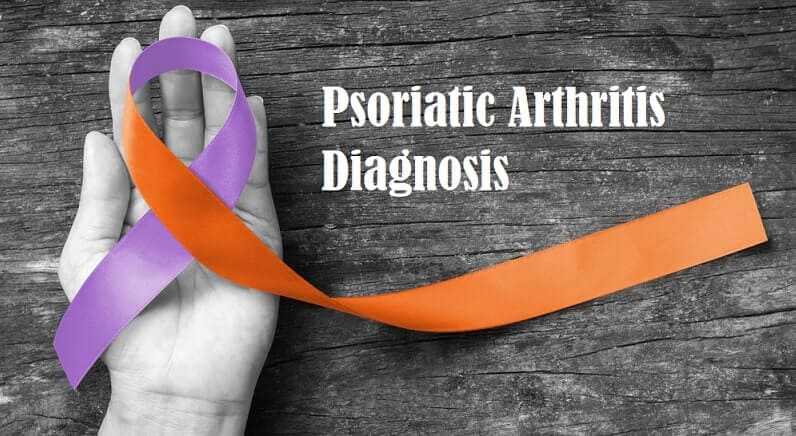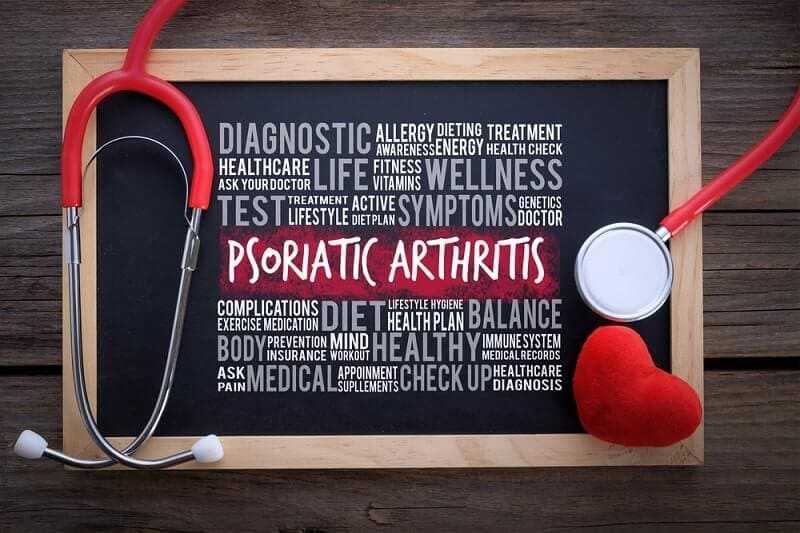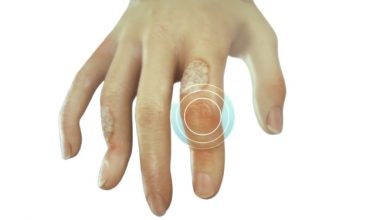Psoriatic Arthritis: The Signs, Symptoms and Types
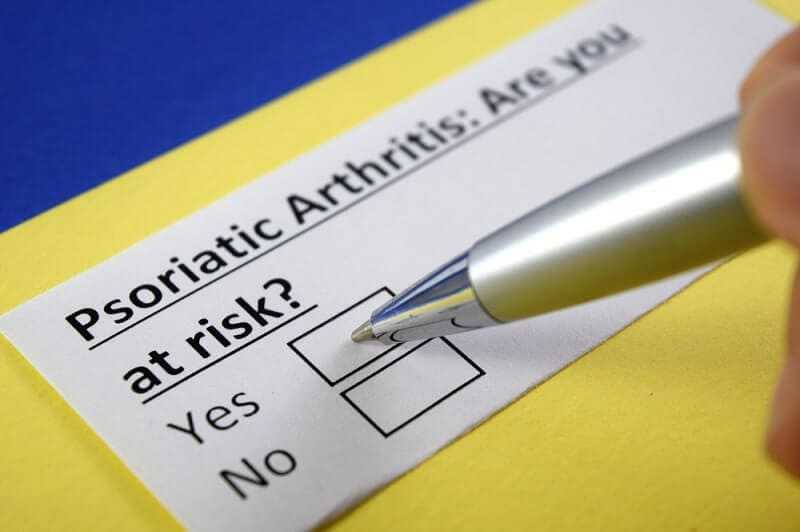
Types of Psoriatic Arthritis
Psoriatic arthritis is classified into five different types:
- Symmetric psoriatic arthritis: This is the most common type of psoriatic arthritis. It affects the same joints on both sides of the body symmetrically, much like rheumatoid arthritis, although it is milder. It can sometimes be disabling and affects more women than men. It is usually accompanied by severe psoriasis.
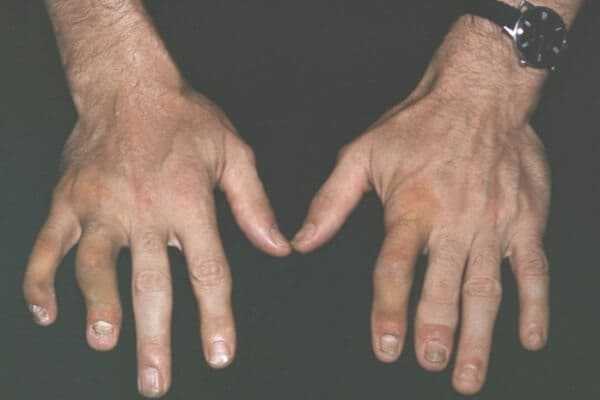
- Asymmetric psoriatic arthritis: This type of arthritis can affect any joint anywhere in the body but is more common in fingers and toes. It can result in irregular shaping of the entire digit due to inflammation (dactylitis). This type can affect one or more joints per hand or foot, and the number of affected joints on the left versus right hand or foot is often unequal. Asymmetric psoriatic arthritis is the mildest form of psoriatic arthritis.

- Psoriatic spondylitis: This type of arthritis affects the spinal joints, causing morning stiffness of the back and neck. One or both sacroiliac joints (joints linking the spine and pelvis at the lower back) can be affected. Psoriatic spondylitis may also attack connective tissues such as ligaments. It can cause immense pain and difficulty walking and can eventually disable the patient.
- Distal interphalangeal predominant: The distal joints of the fingers and toes (closer to the nails than the wrists or ankles) are affected in this type of psoriatic arthritis, which can sometimes be confused with osteoarthritis. However, nail changes in psoriatic arthritis, such as discoloration, detachment, and white patches, can distinguish the two. It is very rare and usually affects men only.
- Arthritis mutilans: This is the most severe and destructive form of psoriatic arthritis and can cause disability. Fortunately, it is very rare. It attacks and can completely destroy the minor joints of the feet and hands. It sometimes shortens the affected fingers and toes. This condition is also known as opera glass hand.
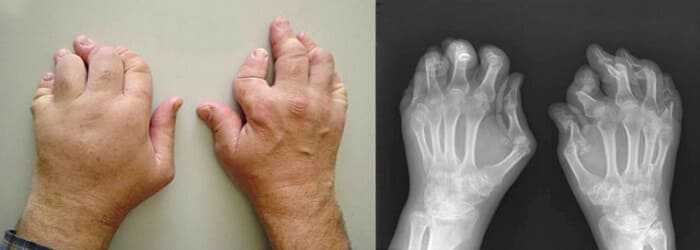
Some interesting facts about psoriatic arthritis that highlight the significance and widespread prevalence of the disease are listed below:
- Approximately 7.5 million Americans, or roughly 2 percent of the total US population, have psoriasis.
- Of patients with psoriasis, 10 to 30 percent develop psoriatic arthritis.
- Approximately 1 million people in the United States have psoriatic arthritis.
- Around 40 percent of psoriatic arthritis patients have a family history of either psoriasis or psoriatic arthritis, or both.
- Almost 90 percent of people who experience psoriatic arthritis notice nail involvement first.
- Caucasians are more prone to developing psoriatic arthritis than African Americans.
Physical Signs and Symptoms
It is important to know the typical symptoms of a disease. These help in both diagnosis and treatment. As stated earlier, most (not all) psoriatic arthritis patients have psoriasis. Psoriasis causes red patches of skin covered with silvery white flakes and dry, cracked skin that may bleed. Patches can range from small spots to areas with major scaling. When the symptoms of psoriasis become aggravated and include joint inflammation, the condition is called psoriatic arthritis. Symptoms may range from mild to severe and differ from patient to patient. Patients may experience periods ol remission, when the symptoms completely go away or improve considerably, followed by periods of extreme flare-up, when the symptoms are at their woist. This can sometimes make diagnosis difficult. Usually, the symptoms worsen as the disease progresses. Typical signs and symptoms of psoriatic arthritis include the following:
- Inflammation leading to painful, swollen, hot, and red joints.
- Sausage-like appearance of swollen fingers and toes.
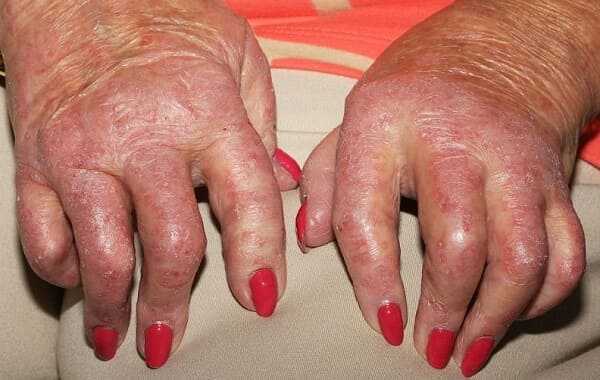
- Nail changes, including discoloration and development of yellow spots and tiny depressions, or pits. Nails may loosen and digress from the nail bed or develop fungus. This is one of the first noticed symptoms of psoriatic arthritis.
- Inflammation of muscles, tendons, and the area around the cartilage, usually occurring on the heels or the soles of the feet. Psoriatic arthritis can cause difficulty in walking and climbing stairs. When inflammation occurs in the muscles of the chest wall, it can cause immense chest pain and shortness of breath.
- Joint stiffness at its worst in the mornings or after long periods of sitting. Stiffness improves with movement.
- Pain in the affected joints. The intensity of pain varies among patients and sometimes from day to day.
- Acne.
- Inflammation of the front of the eyes, also called conjunctivitis. Inflammation around the pupil can also take place. Known as iritis, this is a painful condition that gets worse with bright light and can lead to permanent blindness.
- Stiffness and pain in the back and neck.
- Inflammation around the heart leading to shortness of breath and even heart failure in severe cases.
- Skin lesions anywhere on the body. Common spots for such lesions are inside the belly button, between the buttocks, and behind the ears. Patches of red, irritated, and itchy skin develop. They are covered with white or silvery scales that keep shedding.
Related Article


